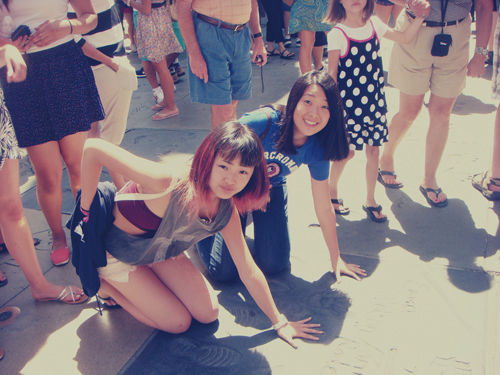
If there’s anything that will test you and your teen’s ability to plan ahead, it’s the university application process. Before those applications are even sent, the student needs to decide where to apply. A major influence on those application decisions is the in-person university visit. “I wanted to experience university life,” says Yeo Rang Lee, a Year 12 student at Yew Chung International School of Beijing (YCIS Beijing) who spent six weeks visiting the University of California, Los Angeles (UCLA). “I decided to visit in person, as this was the best way to truly get a feel for not only the university, but also the city that could by my home for four years.”
Mapping It Out
A desire to get a feel for the atmosphere of a school and its surroundings is the biggest reason to visit a university in person. Living in China can make visiting schools in other countries a cumbersome trek, but the process is perhaps even more important for students who have resided here for long periods – or indeed their entire lives.
The timing of the visit is crucial. Generally, it’s best to start visiting schools about two years before the student is slated to start university. Last summer, Suzi Roberts took her son Jake Ou to visit universities in the UK, where both hold citizenship. Ou graduated from Dulwich College Beijing (DCB) this June and will start university in the fall. “Jake’s home has always been Beijing. He spent summers with family and friends in the UK, so his knowledge of the UK has been limited to the places we visit each year,” says Roberts.
She and her son consulted The Times Good University Guide for course and university options to help narrow down schools. The pair embarked on a journey to universities in Edinburgh, Manchester, Bath, Exeter, and Bristol. The visits led Ou to realize that he did not want to attend a campus university like Bath or Exeter, but instead apply to a university in the city.
Talia Jin, a 16-year-old student at the Western Academy of Beijing (WAB), also plans to get a feel for potential universities. This summer, she will visit a number of schools in the US. In the Boston area, Jin will look at schools like Smith College, Wellesley College, and Amherst College. On the west coast, she plans to visit Claremont McKenna
College and Scripps College in California.
Jin took a methodical approach to planning her trip and tried to maximize her visit time by first narrowing down schools by type (liberal arts or sciences, big or small), then paring down regions by determining which states had a higher concentration of schools that interested her. That meant nixing visits to states that had only one or two schools of interest.
Yeo Rang Lee, who is from South Korea, narrowed down her visits even further. She spent six weeks at UCLA’s Summer Discovery Program. Instead of visiting multiple schools to get a feel for each one, she opted to get an overall feel for university life itself by staying in a dormitory and studying in the lecture room. “I wanted to stay as long as I could and get the most out of my trip,” says Lee. “It was a great way to experience university life and clarify in my own mind that I definitely wanted to go to university in the US.”
Students who need more guidance with US schools should check out College Board’s Big Future website (see Resources), which has an interactive filter system for narrowing down school choices.
On Campus
Once you and your teen are standing on a university campus, there’s still plenty to do. Most schools have designated open days for prospective students, but timing the trip around those days can be tricky. Before going, Suzi Roberts recommends checking school websites for open day dates and times, booking the best day or time, and planning the itinerary around those windows.
In addition to taking a tour, visitors should make an effort to talk to both students and faculty at the school. While at UCLA, Lee met with the school’s senior international evaluator for a chat. Not only is getting face time with admissions representatives a good move, it’s also great practice for the application interview. Many official visits include time with an admissions representative, but Roberts and Ou made a point of asking if there was an available admissions person at each school. They spoke with representatives at Bath and Manchester, and received lots of helpful information about the application process and specific courses. Prospective students should come armed with questions. Parents should be prepared as well, but it’s best to let the student take the lead when asking questions to admissions representatives.
Some schools will allow prospective students to attend a class or even stay the night. Occasionally, students can arrange their application interview to take place during the visit. Take advantage of as many of these offerings as possible to maximize the time spent at each school. Roberts also suggests setting aside a day to visit the area around the school, which can play just as big a role in a student’s overall happiness and college experience.
Additional Advice
Most families visit universities over the summer holidays, but Roberts advises dropping in over Chinese New Year if possible. Most overseas schools are still in session, which offers more opportunities to speak with current students. Lee encourages students to consider a summer program at a prospective university, but also advises them to take advantage of the most valuable resource for advice and perspective: their high school guidance counselor.
When Talia Jin was planning her trip, parents who had visited universities with their kids highly recommended attending an official presentation and question-and-answer session. Others encouraged her to visit different types of schools. “Even if you have an idea of what type of college you’re interested in, it’s still good to keep an open mind because you don’t really get a sense of the schools until you are there,” she says. “You may end up surprising yourself.” Roberts agrees: “It’s invaluable to make a trip to a few universities, even if these are not the ones your child ends up applying for, as they begin to get a better understanding of what this is all about.”
Resources
The Times Good University Guide
www.thetimes.co.uk/tto/public/gug
Big Future
bigfuture.collegeboard.org/find-colleges/how-to-find-your-college-fit
photo courtesy of Yeo Rang Lee
This article originally appeared on p40-41 of the beijingkids July 2013 issue.
Check out the PDF version online at Issuu.com



